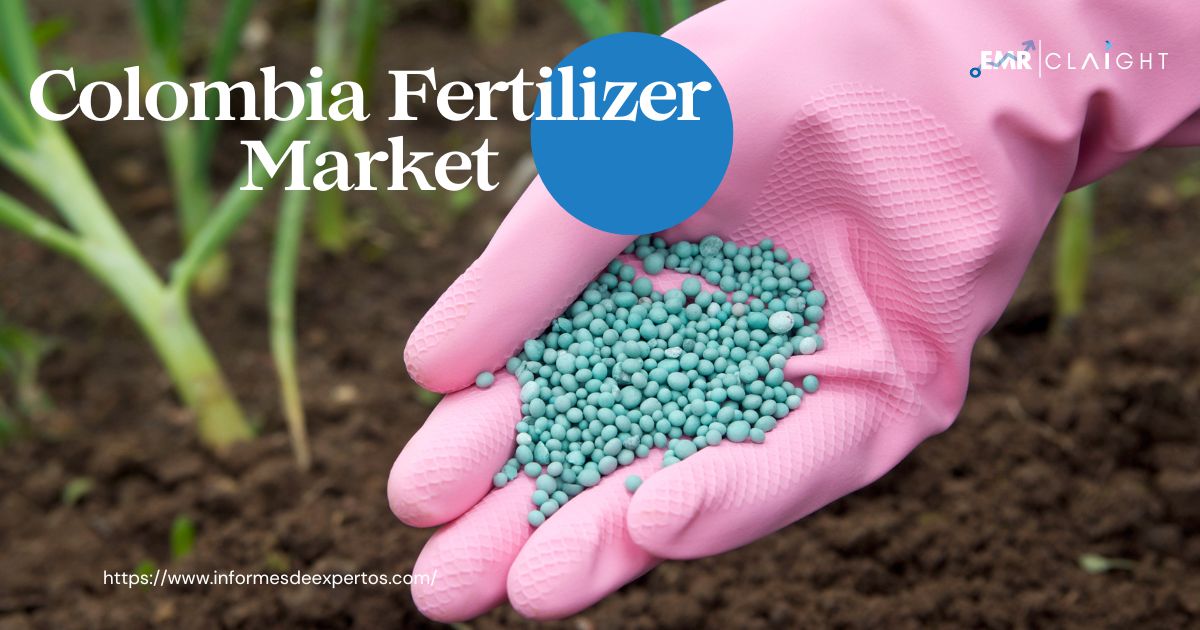
The Colombia fertilizer market represents a vital component of the agricultural sector, providing essential nutrients to enhance soil fertility and crop productivity. Fertilizers play a critical role in supporting Colombia’s agricultural industry, which is a significant contributor to the country’s economy and food security.
Market Overview
Colombia’s diverse climate, topography, and soil conditions create a conducive environment for agricultural production across a range of crops, including coffee, bananas, flowers, sugarcane, and palm oil. Fertilizers serve as indispensable inputs for farmers, helping to replenish soil nutrients, improve crop yields, and sustain agricultural productivity.
Market Size and Growth
In 2023, the fertilizer market in Colombia achieved a value of USD 127.66 million. The market demonstrates a steady growth trajectory, with an estimated compound annual growth rate (CAGR) of 2.7% forecasted between 2024 and 2032. By the end of 2032, the market is expected to reach a value of USD 162.25 million, reflecting sustained demand for fertilizers within the Colombian agricultural sector.
Market Dynamics
Several factors drive the dynamics of the fertilizer market in Colombia:
- Agricultural Practices: Colombia’s agricultural landscape encompasses a mix of smallholder farms, agribusiness enterprises, and plantation agriculture. Fertilizer usage varies based on crop types, farming techniques, and regional agroecological conditions. Factors such as crop rotation, soil pH, and nutrient deficiencies influence fertilizer selection and application rates.
- Government Policies and Subsidies: Government initiatives aimed at promoting agricultural development, enhancing food security, and supporting rural livelihoods impact the fertilizer market. Subsidies, incentives, and extension services provided to farmers influence fertilizer accessibility, affordability, and adoption rates.
- Technological Advancements: Innovations in fertilizer formulations, production processes, and application methods contribute to market evolution. Enhanced efficiency fertilizers (EEFs), controlled-release fertilizers (CRFs), and precision agriculture technologies offer opportunities to optimize nutrient management, reduce environmental impact, and improve resource use efficiency.
- Environmental Sustainability: Concerns regarding soil degradation, water quality, and environmental pollution drive demand for sustainable fertilizer solutions. Organic fertilizers, biofertilizers, and eco-friendly formulations gain traction among farmers seeking to minimize chemical inputs, preserve soil health, and comply with environmental regulations.
- Market Competition: The fertilizer market in Colombia is characterized by competition among domestic and international manufacturers, distributors, and suppliers. Key players compete on factors such as product quality, pricing, branding, distribution networks, and customer service to capture market share and maintain competitiveness.
Regional Variations
Regional variations exist within the Colombia fertilizer market due to differences in agroclimatic conditions, crop preferences, and agricultural practices. For example:
- In regions with intensive commercial agriculture, such as the coffee-growing regions of the Colombian Andes, demand for specialized fertilizers tailored to specific crop requirements is high.
- Coastal areas may exhibit preferences for fertilizers adapted to saline soils and humid conditions prevalent in coastal agroecosystems.
- In rural areas with smallholder farming communities, access to affordable fertilizers and agronomic support services is critical for promoting sustainable intensification and livelihood improvement.
Future Outlook
The future outlook for the Colombia fertilizer market is influenced by factors such as population growth, urbanization, climate change, and technological innovation. Sustainable intensification strategies, including precision agriculture, soil conservation practices, and integrated nutrient management, will shape the adoption and utilization of fertilizers in Colombian agriculture.
In conclusion, the Colombia fertilizer market plays a pivotal role in supporting agricultural productivity, food security, and rural livelihoods. With ongoing investments in research and development, market infrastructure, and agricultural extension services, Colombia is poised to harness the potential of fertilizers to optimize crop yields, enhance sustainability, and contribute to the nation’s agricultural development goals.
